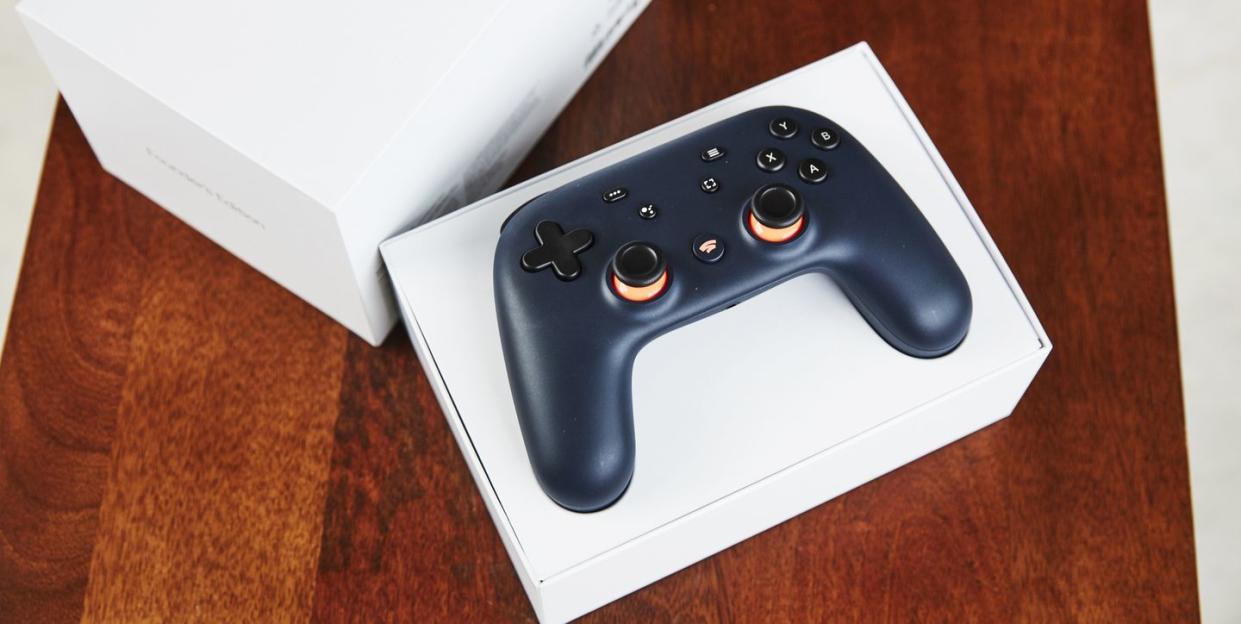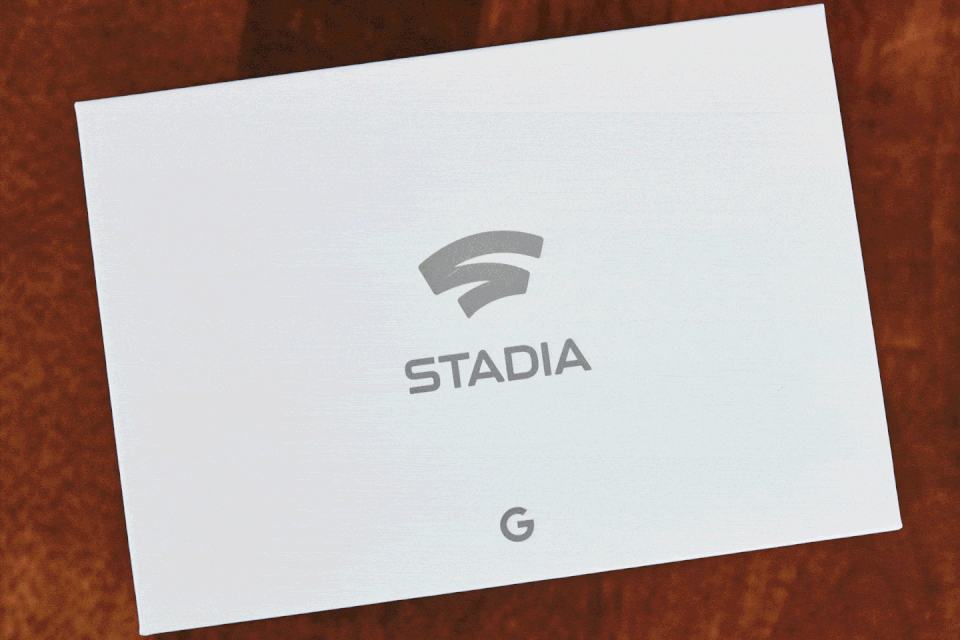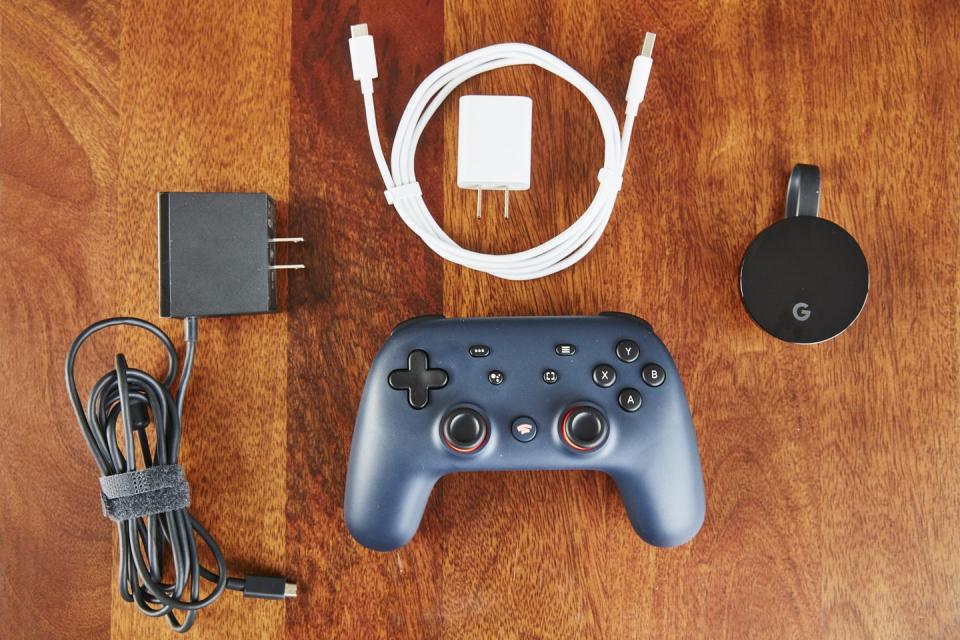Google Stadia Is Built for the Future (But Not the Present)

Gaming is no stranger to evolution. You’d don’t go from Pong to Playstation 5 in under 50 years by playing it safe. So its within that culture of innovation that we get Google Stadia.
By looking at it, it’s not particularly impressive, at least not compared to souped-up gaming PCs or other powerful console hardware. But the Stadia can do things most other systems can’t: it can play games on any screen you own as long as you have a strong internet connection. Your smartphone (iOS or Android), tablet, laptop (macOS or Windows), or TV can run Google Stadia. In short, Stadia wants to be the ultimate mobile gaming machine.
Google announced Stadia back in October 2018, and since then its been ramping up to its launch tomorrow, November 19. But Stadia doesn't offer enough to truly kickoff a new era of wireless gaming.
A Dream, (Not Yet) Realized

It makes more sense to think of Stadia as a “Netflix for Games” service than a standard video game console setup, like Xbox One or the upcoming Playstation 5. Like Netflix, Stadia offers tier levels that deliver different experiences. The basic membership is free for all, but you miss out on some exclusives, discounts, and your gameplay resolution tops out at 1080p. But cough up $10 a month, and you get some free games (like Destiny 2), 4K playback, and a bunch more.
After you’re signed in, things work much like a regular streaming service. Select or purchase a game, connect to Stadia’s cloud streaming service, and then it’s game on—with any device you’d like. You can even choose any controller you’d like (though third party controller integration is coming later in 2020).
The only additional piece of hardware you need—which comes with the Founder’s Edition and Premiere Edition Stadia bundles—is a Chromecast Ultra, which sells for $70. An Ultra gives your TV the smarts it needs to play nice with Stadia, smarts that are already baked into the smartphones and laptops you already own.
With just those four things—Stadia subscription, controller, internet connection, and a Chromecast Ultra—the world of gaming is open to you…sort of.
So...What’s Stadia Like?

There is one big thing you need to know about Stadia before you’re hacking your way through Final Fantasy XV: you absolutely need an internet connection. The strong and faster that connection, the better. Because it’s a streaming service, it’s using all those megabits-per-second to provide the best gaming experience possible.
Luckily, the service does scale depending on your connection, so if you’re cruising at measly 10mbps, you’ll still be able to play games in 720p resolution at 60 frames per second. It only scales up from there the faster things get.
While playing for the most part, this isn’t a huge concern. My home wifi sits comfortably at 50mbps and even my Google Fi plan can provide a robust 22mpbs, more than enough for me to enjoy 1080p on my smartphone.
⚠️ Beware of using your smartphone on Stadia as you’ll nom through your data plan pretty quickly if you’re not using WiFi.
While playing Mortal Kombat 11 on Chromecast-enabled Vizio television, there were a few glitchy, artifacting moments that took me out of the experience, but the controls were super-responsive and everything felt relatively smooth when I had a strong connection. It was one of the best cloud-gaming experiences I've ever had.
Things seemed to work even better on my laptop and smartphone, perhaps because it could quickly cutout the Chromecast middleman and just use the gadgets’ onboard smarts. The ability to switch seamlessly among all my devices, re-sync the controller, and keep gaming felt like the future. It was cool.
But what’s really impressive was the phone I was using in some of these tests. The Pixel 3a XL is an amazing phone (we’ve not shy about our recommendation), but it’s not a blazing fast phone. This mid-tier phone doesn’t use the fastest processors or the best screens, it’s half the price of the new Pixel 4 after all. But despite its middling status, it played great. It’s nice to know that Stadia won’t be a walled garden of iPhone 11 Pro and Pixel 4 users.
The ultimate goal is to play Stadia on any screen you own—literally.
A Lot of Unfortunates
When any new streaming service launches, it’s going to have some growing pains (just look at Disney+ this week), and the Stadia doesn’t escape this unfortunate fact of life.
The big one is the game selection. On Tuesday, Stadia will launch with 22 titles, which is simply not enough for any major gaming platform. Luckily, Google is planning for more releases to arrive before the end of 2019, with games like Borderlands 3, Ghost Recon: Breakpoint, Dragon Ball: Xenoverse and Darksiders Genesis. But here's are all the games available at launch:
Assassin’s Creed Odyssey
Attack on Titan: Final Battle 2
Destiny 2: The Collection (free in Stadia Pro)
Farming Simulator 2019
Final Fantasy XV
Football Manager 2020
Grid 2019
Gylt
Just Dance 2020
Kine
Metro Exodus
Mortal Kombat 11
NBA 2K20
Rage 2
Rise of the Tomb Raider
Red Dead Redemption 2
Samurai Shodown (free in Stadia Pro)
Shadow of the Tomb Raider
Thumper
Tomb Raider 2013
Trials Rising
Wolfenstein: Youngblood
That’s good news, but it’ll need even more support if it wants to be a serious contender. It also has a lack of original content, a big seller for platforms like the Playstation and the Nintendo Switch. There’s Gylt by indie developer Tequila Works, and that’s it. That number is likely to change, but at launch—it’s not a great look.
Stadia is also a tempting offer for the casual gamer or the frequent traveler, but not so much serious gamers. Simply put, the quality and responsiveness of Stadia just won’t cut it for the serious gaming crowd who’s used to top-of-the-line PC rigs. And while it is pitched as a go anywhere machine, it likely won’t work great on your next flight (where a majority of the world’s population does most of its mobile gaming) due to WiFi restrictions.
With the coming advent of 5G and ubiquitous WiFi, Stadia will only improve in this regard but it’s not quite there yet. But that’s what makes Stadia such an interesting machine—it knows it’s a gadget for a future that hasn’t quite arrived. But that future is coming, and when it gets here, Stadia will be waiting (as will other services no doubt).
My suggestion? If you want to experience cloud-based gaming, check out the basic subscription when it becomes available and see what support looks like in the coming months/years along with Google’s implementation of new features. The $10/month might not be worth it now, but I like to live by the phrase “never say never.”
You Might Also Like

